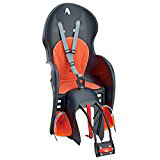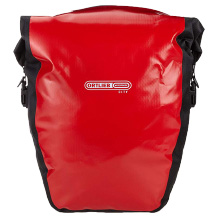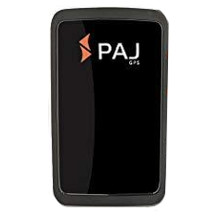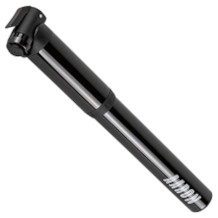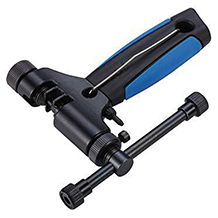Bike phone holder purchasing advice: how to choose the right product
- The most important facts in a nutshell
- Bicycle smartphone holders are practical for using a smartphone while riding.
- The mount is screwed to the handlebar, stem or frame of the bike.
- The smartphone is held by several clamps or silicone straps; some models place it in a pocket.
- Most mounts are designed for smartphones with a screen diagonal of three to seven inches.
- Some manufacturers use durable plastics such as PE or EVA, others rely on corrosion-resistant metal alloys.
Smart, even during the ride
During a bike ride, the smartphone is a useful companion: as a navigation device, it always tells you where you are and where you can ride along. It also records your route if you wish, so that you can track your trip afterwards and optimise the route for the next ride. A holder for the smartphone is also practical if you listen to music or take calls while cycling.
Holding a smartphone in your hand or on your ear while riding is just as forbidden on a bike as when driving a motor vehicle. If you get caught, you have to pay: If you hold the smartphone in your hand, it will cost you 55 euros. If you endanger road traffic because of this, a fine of 75 euros is due; in the event of an accident, it is even 100 euros. With a smartphone holder for the bicycle, you avoid these risks and are on the safe side, provided you do not operate the device while riding.
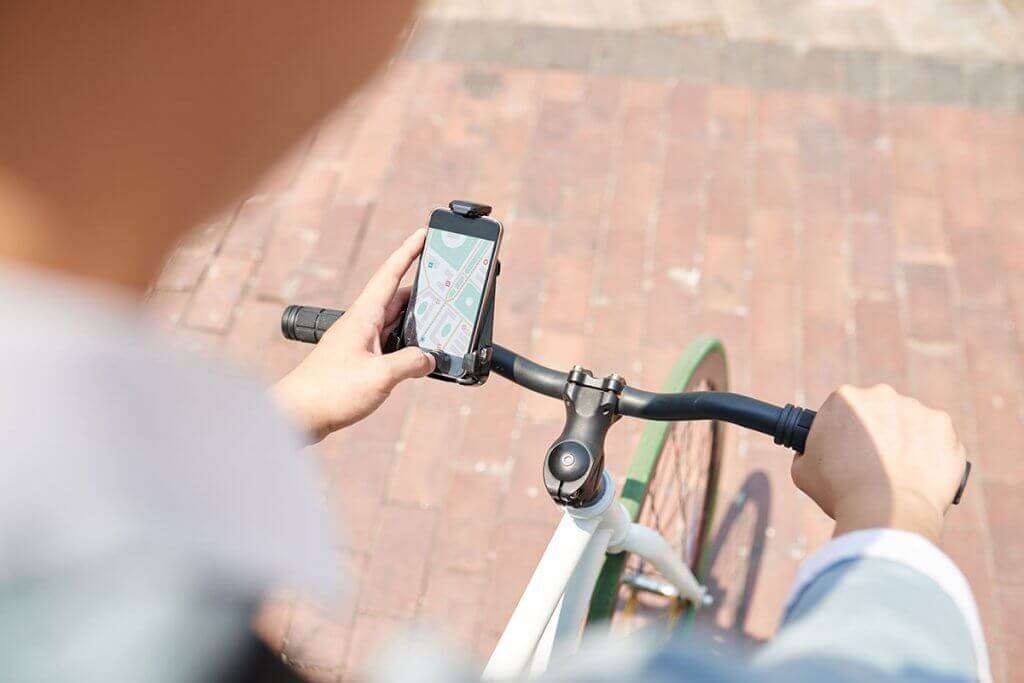
The music you play on your smartphone and listen to through headphones must not be so loud that you can no longer hear other ambient noises, such as a siren. Then 15 euros are due, whether with or without a smartphone holder. Always pay attention to your surroundings and the road traffic. After all, a smartphone is always a certain distraction.
Universal use
Smartphone holders are not only practical for bicycles. The holders can also be attached to other vehicles, for example a motorbike, a scooter or an electric scooter, to use the smartphone as a navigation device. You can also benefit from them as a pedestrian in certain situations: The holders can be mounted on children’s trolleys or shopping trolleys, for example.
Bicycle smartphone holders are designed to cope with all eventualities: They can be used on rides through the city or off-road without damaging the smartphone. A waterproof mobile phone pocket on the mount protects the smartphone from rain and splashing water. Some pockets even offer space for an external battery so that you can charge your smartphone with a powerbank while riding. Thanks to individually adjustable joints on the holders, the smartphone can be brought into the desired position at any time. Most holders are also suitable for different smartphone models.
Pokémon Go
A bike smartphone holder is particularly practical for apps that support a live tracking function. Since 2016, millions of users have enjoyed the game Pokémon Go. The player runs through the world as a trainer to catch wild Pokémon on his way and to collect experience points by activating so-called Poké-Stops, which are located in real places. The virtual Poké world can be discovered much faster on a bicycle.
What should be considered when buying a bicycle smartphone mount?
When buying a bike smartphone mount, there are two main things to consider: the diameter of the mount so that it also holds on the bike pole, and the smartphone mount. Make sure in advance that your smartphone fits into the mount. Manufacturers usually use different materials to provide the best possible protection for the clamped device.
Diameter of the bar
Bicycle smartphone holders can be attached to the handlebar, stem or centre bar of the frame. In order for the holder to be attached to it, the bar simply has to have a suitable diameter.
Some models can be mounted on particularly thin bars that have a diameter of only 15 millimetres, while other mounts also hold on thicker bars with a diameter of 45 millimetres. Especially for stem mounts, the diameter should be rather large, as the handlebars of modern bikes usually have a diameter of 31.8 millimetres.
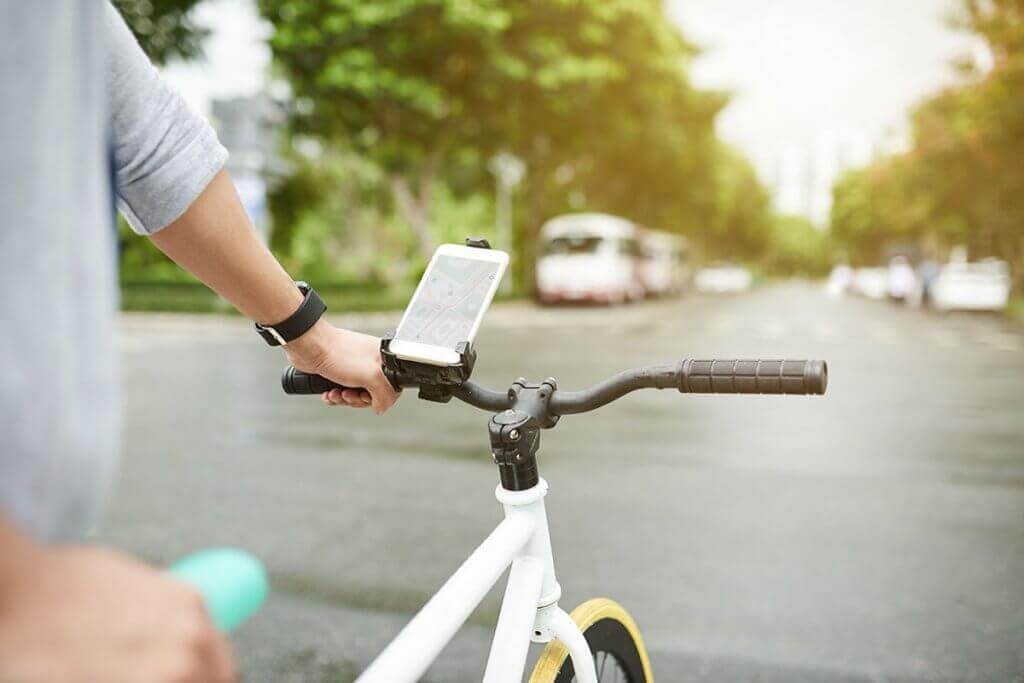
Mounting
The retaining ring is either screwed to the pole or fastened by means of a clamp. Many holder rings can also be mounted without tools using a type of cable tie, while other models require you to use a Phillips screwdriver or an Allen key. The holder for the smartphone is firmly mounted to the rest of the construction in most models, but in some cases it can be removed: It is then either hooked in or attached with a magnet. The installation time of a smartphone holder is between 10 and 120 seconds, depending on the model.
Smartphone mount
With most bicycle smartphone holders, the mobile device is attached to the holder with a click or clamp fastener. A silicone holder provides additional protection and ensures that the smartphone does not slip in the clamp; in some cases, the device is secured solely by means of a silicone holder.
The clamps are usually located on the sides or at the corners; side clamps have the advantage that they do not cover the camera. However, it is possible that not all buttons can be operated and connections reached. Clamps on the corners do not have this problem. The inside of the holders, whether on the sides or in the corners, are usually coated with rubber so that the smartphone is not scratched. In some cases, the entire support surface of the smartphone is padded with a foam or rubber mat so that the device is shock-absorbent. Some models have a small screen mounted at the top of the holder to keep out the sun’s rays so that the display is easier to read.
Pocket holders are another alternative and practical, as they also protect the smartphone from dust, wind, rain and other precipitation. Many pockets are similar to a smartphone case and only offer space for the device. However, if the bag is large enough, other utensils such as a wallet, keys, headphones, gloves or power bank can be stored underneath the smartphone, which is attached to the lid of the bag. Such bags often offer up to two litres of storage space.
With some models, you can also clip a powerbank directly under the smartphone to charge it while driving. The disadvantage of a pocket holder, however, is that you may not be able to operate the buttons on the smartphone accurately; in addition, the connections may not be accessible. This can also be the case with other holders if the clamps on the sides cover the buttons. A silicone holder makes the most sense here, as the individual straps can be easily pushed to the side. No matter which holder you choose, you should make sure that it is large enough for your smartphone. If the holder is too small, the smartphone can either be damaged or the holder permanently presses the buttons on the sides.
Most bike smartphone mounts are equipped with a swivel and ball joint at the back so that you can change the angle of inclination. You also have the option of viewing the display either horizontally or vertically, as the mount can be rotated 360 degrees. A safety lock on the back ensures that the holder and smartphone cannot fall out or be stolen in passing. When the mechanism is released, you can remove and use the smartphone together with the direct holder.
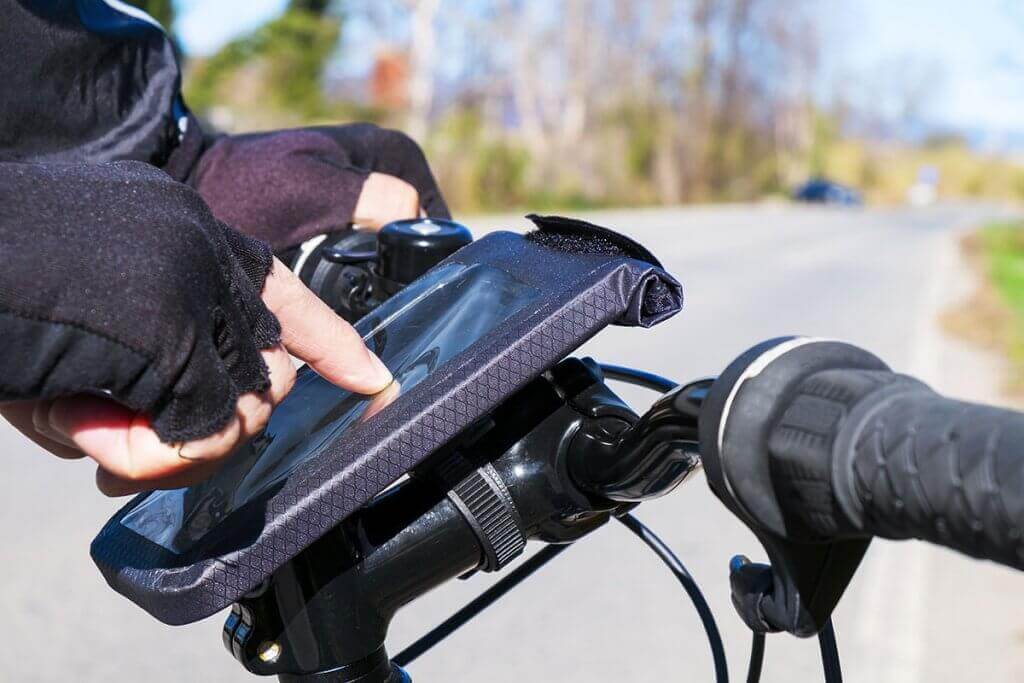
Material
The brackets that are attached to the bicycle are usually made of metal or plastic. Metal alloys are far more stable and weather-resistant. In addition, manufacturers make sure that the material is corrosion-resistant. The clamps between which the smartphone is attached are also made of metal or plastic. They are usually coated with rubber so that the smartphone case is not damaged. Silicone cases usually have a hard plastic part to provide a firm support surface for the smartphone. The case holders are made of durable and waterproof plastic, such as polyethylene, PE for short, or ethylene vinyl acetate, EVA for short.
Size
For the smartphone holder to be useful, it must be designed for the size of your smartphone. You can usually find the smartphone sizes suitable for a mount in the manufacturer’s specifications; often the manufacturers also give the designations of the models so that you can see straight away whether your smartphone will fit in the mount. Most bicycle smartphone holders are suitable for smartphones with a screen diagonal of 3 to 7 inches, i.e. 7.6 to 17.8 centimetres. The suitable dimensions correspond to a smartphone width of 50 to 110 millimetres. Also consider the height of the device. This is usually also specified by the manufacturer and is usually 10 to 15 millimetres.
Instructions for use
When mounting the bicycle smartphone holder, make sure that the construct is firmly attached to the bicycle; it should not wobble or slip while riding on uneven terrain. It is equally important that the smartphone sits firmly in the mount so that it does not fall out during the ride. It must fit exactly so that the holder does not press the buttons of the device against your will.
If you want to operate the smartphone, only do so when you are standing and not while driving. With clamp mounts, the display is freely accessible; if the device is in a pocket, you may have to remove it to use all the functions. Especially in winter, it is advisable to wear gloves with sensor-sensitive fingertips. This allows you to operate the device at all times. Alternatively, racing cycling gloves are practical because the fingertips are exposed.
If you are planning a longer tour, you may need to charge your smartphone occasionally. Holders with space for a power bank are particularly suitable here. You can use it to charge your smartphone via cable or wireless near-field communication. Bear in mind that the powerbank has to fit in the pockets for this. If you are travelling with an e-bike, you can also use the bike to charge your mobile device. Some e-bikes have a USB port to which you can connect your smartphone while riding.

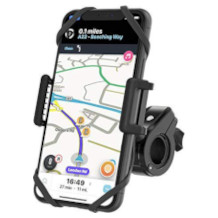
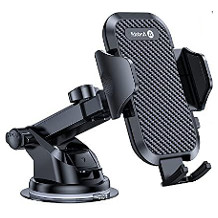
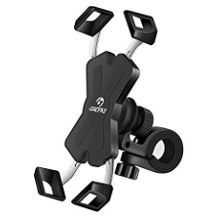





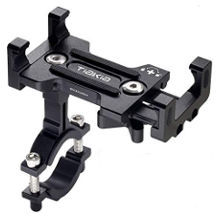



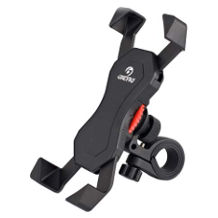
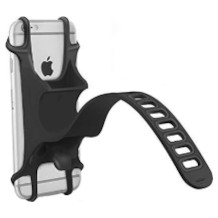

 93 reviews
93 reviews

